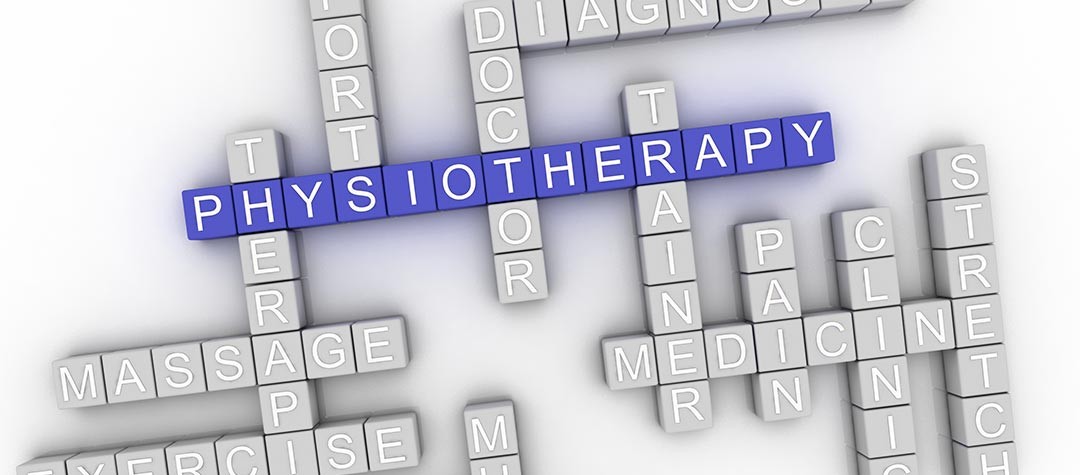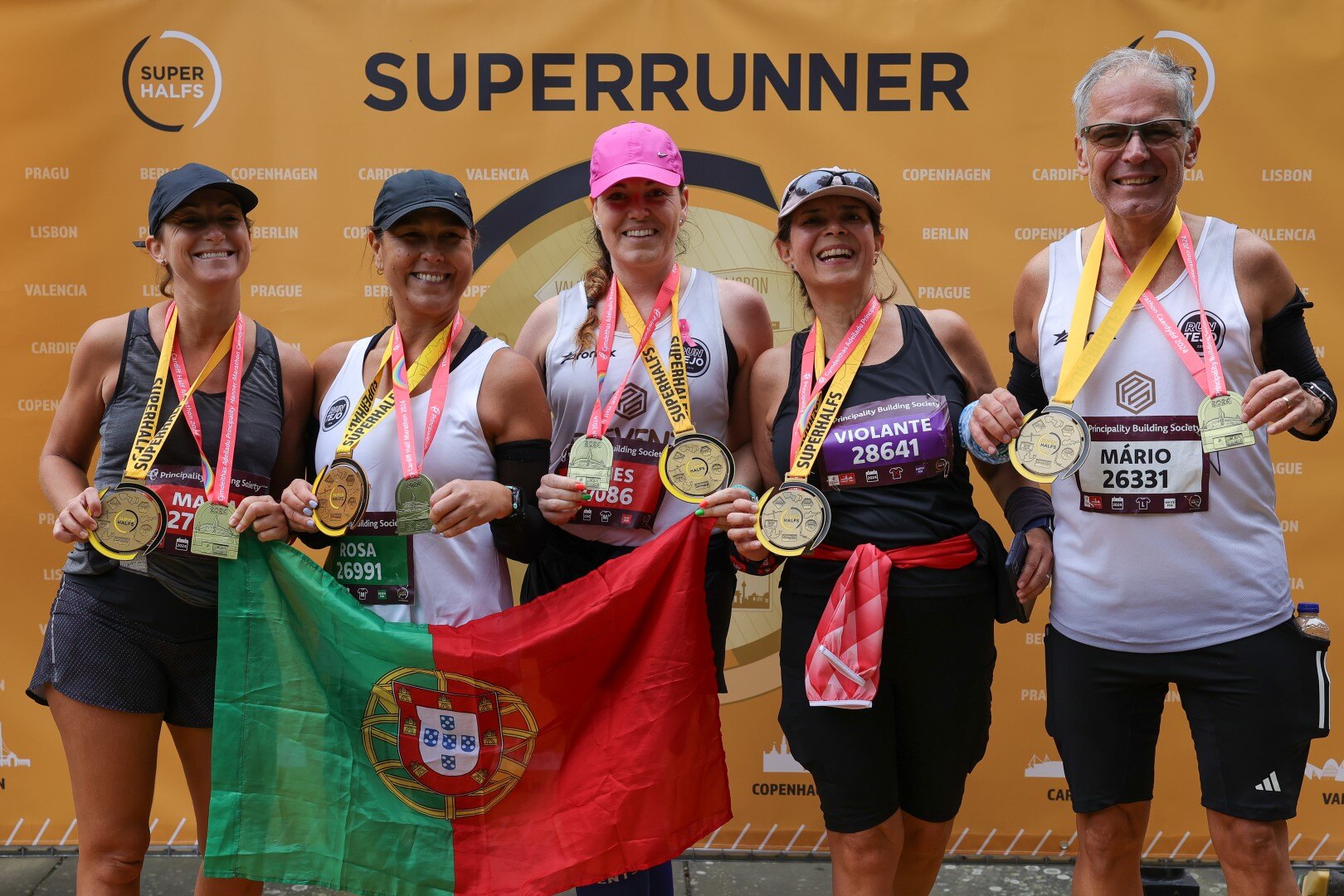Shin pain can be common for runners and is intrinsically linked to biomechanical issues. Find out about common shin pain issues, how to tell the difference between them, and how you can address them.
Shin pain can be caused by tibialis posterior tendon strain, its attachment to the bone via the periosteum can become inflamed (periostitis), the bone itself can succumb to stress injury (stress response/fracture), other tendons in the area can become painful (long big toe flexor – flexor hallucis longus and flexor digitorum longus which attaches to the other toes). There can be types of compartment syndrome as well as syndromes like tarsal tunnel and referred nerve issues. Of course there can be combinations of these as well.
This article is treating the most common of these, the tibialis posterior tendon muscle strain or tightness which often comes in partnership with some periostitis (inflammation of the fibrous coating of the bone). It can develop into a bony stress response as well.
Typical symptoms of medial shin pain
Typical tibialis posterior (TP) pain is felt as a dull pain in the medial aspect of the shin, along the bone, and into the softer but sensitive muscle behind the bone. You have to decide if it is a stress fracture or a soft tissue issue by how it behaves and feels.
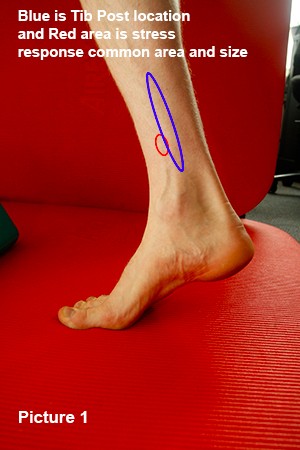
A stress fracture gives a dull pain as you continue to run, and is painful afterwards and at rest. A soft tissue problem is generally not sore at rest and is more tender at the start of a run. The soft tissue problems have a broad area of tenderness in the muscle to the inside of the shin but no real focal point. A stress fracture presents as a focal point of exquisite soreness on a particular part of the bone about 1 cm across.
The two conditions can come along together as they are caused by the same thing which sometimes makes the diagnosis difficult. However, the rest pain and focal point of pain are the ‘red flag’ signs to watch for. The complicating factor is the periostitis which does make the bone feel tender to touch. It is generally over a larger area and is consistent rather than one exquisitely painful spot as in a bony stress problem.
The pain begins as a feeling of tightness after a run which is often ignored as a ‘normal’ consequence of running. When it becomes regular you should worry because you are repeatedly overloading tissues and they will develop into a proper injury.
Causes of shin pain and addressing it
The main cause of this injury is over-pronation (foot rolling in), either directly in the foot or involving the leg as a whole with excess internal rotation of the leg on impact. This lack of control means that the muscles on the inside of the shin, mostly TP, are overloaded and become painful. This is because TP is the main muscle that controls pronation. Any weakness in them or the gluts which control and help to absorb internal rotation from the hip will lead to pain.
Simple tests can be very revealing. Stand in front of a mirror and do a simple knee bend and watch where your knee travels over your foot. Do the same on a hop. The knee should stay over the middle of the foot and the foot should not roll in. Picture 2 shows an example of good alignment and Picture 3 shows an example of incorrect alignment.
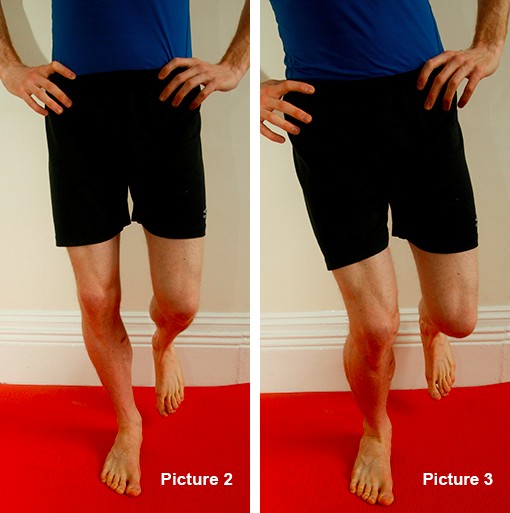
If this pattern is present look at three things:
1. TP strength
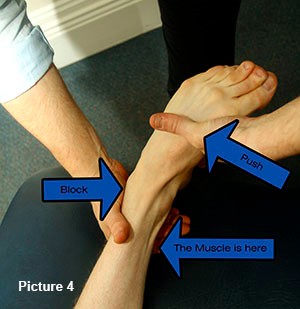
Holding the foot as shown in Picture 4 you should be able to hold against a person trying to push your foot outwards. Compare to the non-symptomatic side.
If you have weakness then you need to strengthen. Simple work with a theraband will help as shown. 3 times 15 reps at a resistance where 15 is very tired. You can do this same exercise with a cable pulley where you sit and turn the foot inwards against the pulley. Work this in an 8 reps, 4 sets protocol.
2. Calf length
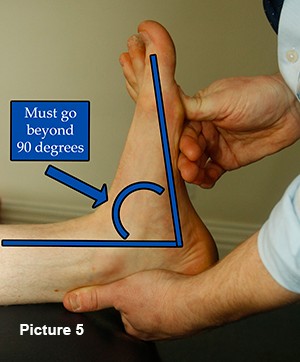
This may or may not be an issue but you should have at least 20 degrees of easy range past 90, as shown in Picture 5. The foot should go easily and not want to shift to the outside as you push it up.
The most effective way to stretch this is with a roller under the calf as shown in Picture 7. Normal calf stretching is also effective (see Picture 6) but it needs to be at least 2 minutes of each exercise 4 times a day. When stretching the calf please make sure the foot is in line with the knee and the arch held up.
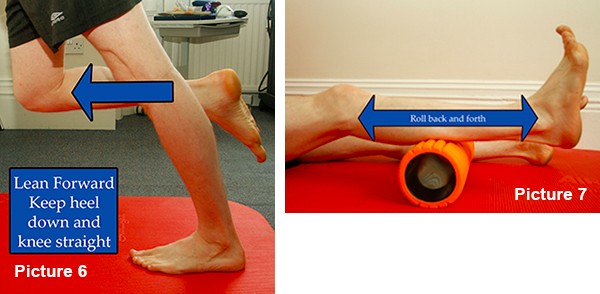
3. Glut strength
Particularly the lateral gluts as these are the ones which are responsible for holding the knee over the foot. In the test position shown in Picture 8 with the leg held up and behind the line of the body you should be able to hold against someone pushing the leg down. Compare to the other side. If the leg can be pushed out then it is not strong enough.
The simplest way to start to strengthen the lateral glut is the illustrated wall exercise (Picture 9.) Stand with the affected leg outermost and the other knee up against the wall. Bend the standing knee just in line with the toes and turn it out over the foot. Push the wall leg into the wall and brace using the gluts on the standing leg. The glut will take a moment to fire. Build from 2 minutes to 5 minutes.
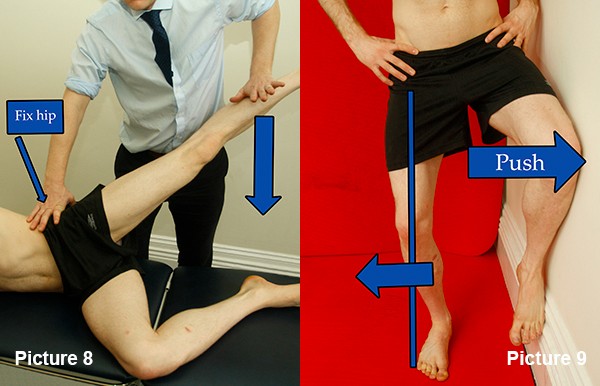
It may seem a tough ask for the glut and foot test but when you consider the forces these muscle should be able to control on impact – namely 4 to 5 times body weight each step – it is not unreasonable to be able to stop another person’s pressure. The comparisons are often useful.
It is also useful to work your fingers or elbow or get proper deep massage into the tight muscle on the inside of the shin for a few minutes a day. Be horrible to yourself. The strengthening process will take a week or so to start working.

